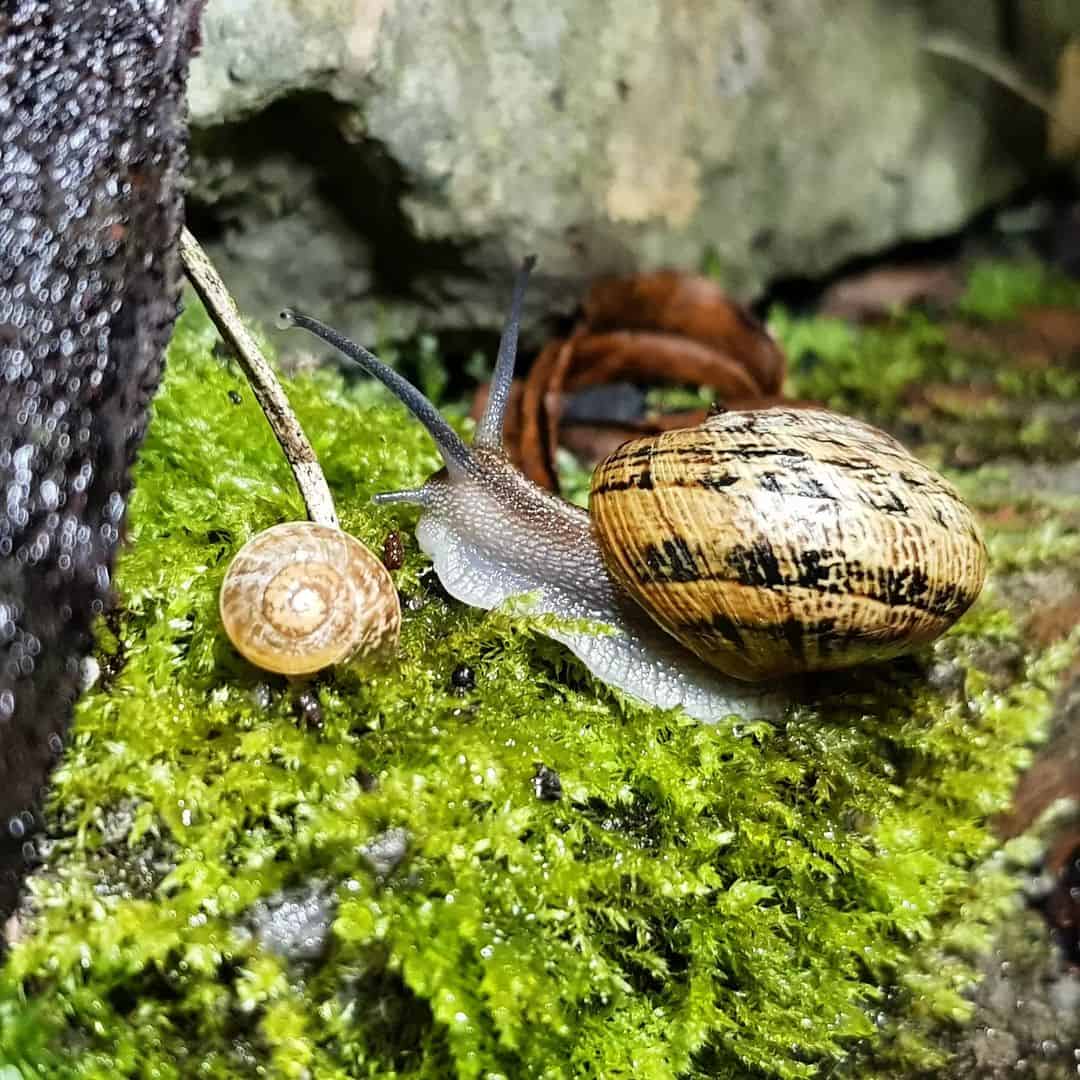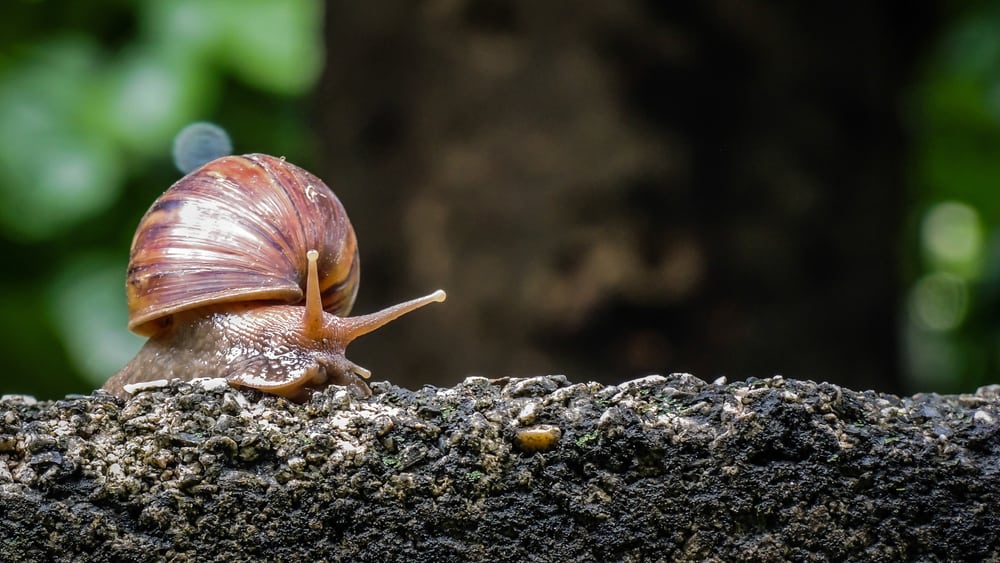Taking care of animals can be time-consuming, difficult, and at times quite expensive. Not if you are taking care of a snail though! This is just one of the reasons I always say that snails are underrated animals.
If you found snails in your backyard and you want to keep them there but you are not sure how to take care of a snail, continue reading to find out everything you need to know. You will learn about taking care of snails from the first to the last days of their lives.
How Do Snails Reproduce?
Snails are hermaphrodites, meaning that each of them has both male and female reproductive organs. This means that they don’t need another member of their species to reproduce. Despite this, they often choose to have intercourse.
If you ever see two snails doing the deed, as aggressive as it may seem, leave them be. Don’t try to separate them and be patient, as it can take several hours until one of the snails is fertilized.
How To Take Care of Snail Eggs
A snail’s life cycle starts with an egg. A garden snail lays up to a hundred eggs per hatch, and they typically mate six times per year. Around 20-50% of the eggs eventually hatch, so if you found eggs in your garden, expect a lot of snails to start crawling around soon.
A snail egg is clear or white with a black dot inside. The snails lay their eggs in clusters so they don’t separate. This way, the eggs have higher chances of survival.
When it comes to taking care of snail eggs, most of the time you don’t have to do anything. Snails lay their eggs in the environment most beneficial for the eggs to survive. They usually dig a hole in the soil several centimeters deep and place them there.
The conditions need to be moist and warm. You should interfere if you see that the eggs are exposed to direct sunlight as it can dry the eggs out. You don’t have to move them; you should just gently cover them with soil.
Moving the Snail Eggs
You can consider moving the eggs if it is very cold outside. This is not necessary as the eggs can survive the winter and hatch when it starts getting warm. However, if you want them to hatch as soon as possible, move them to a ďark, warm, moist place.
Be careful if you decide to move the snail eggs as they are very fragile. Do this only if you are sure that they won’t survive unless you change their position.
The eggs will take around two weeks on average to hatch. This period can be shorter or longer depending on the environment around the eggs.
How To Take Care of Baby Snails
When the eggs hatch, you will get a lot of baby snails to take care of. If you have never seen a baby snail, you may be surprised to know that they hatch with their shells already on, although they don’t fully develop until several months later.
Baby snails look just like grown snails, only miniature. Once they hatch, they eat the eggshells, both their own and of the eggs that didn’t hatch. This is normal – they need a lot of calcium in their diet, so if you see this don’t try to prevent it.
Optimal Conditions for Baby Snails
Snails that have just hatched may spend around a week resting. They usually don’t eat a lot, so don’t be concerned about it. Provide them with vegetable leaves, such as cabbage and lettuce, and throw in occasional fruit pieces. They will start eating once they are well-rested and ready.
Try not to move the baby snails. If they hatch, it means that they have a beneficial environment where they will survive. It’s more difficult to provide them with optimal conditions in your home because they need moisture to thrive.
It’s not a good idea to handle them with your hands either. Baby snails are tiny and fragile, so you may damage them in the process. Be patient and wait until they are fully grown.
Finally, ensure that the baby snails have a safe place in your garden. Keep them protected from predators, such as mice, rats, squirrels, toads, and birds.

minimumiinii
How To Take Care of Adult Snails
Snails take months and sometimes even years to fully grow. Adult snails are around an inch tall and long. They reach sexual maturity around two years after they hatch. Their shells are brown, hard, and slightly glossy.
Just like when they are babies, adult snails need moisture, humidity, and warmth to survive. If you have a safe garden free of predators, they will be just fine outside.
If it is extremely dry outside, feel free to spray your little garden friends a couple of times per day. Use warm water to do this as it will keep them moist. Do this for the soil around them too as they can’t thrive in dry soil.
What To Feed Adult Snails
You should provide the snails with food so they don’t have to look for it themselves. They eat lettuce, cabbage, fruits, kale, worms, bark, mushrooms, and pretty much anything else they can get their mouths on.
While the snails can surely find food in your garden, they are very slow, so save them the effort and throw some of their favorites their way. Keep in mind that snails can survive for months without food, so even if you are not around for a while, they will be fine.
Garden snails need water to survive as well. They keep hydrated by absorbing water through their bodies and the food they eat. This is another important reason for providing them with a humid and moist environment at all times.
Can You Pick Up Snails?
You can also pick up your snails and play with them. Granted, they are not particularly playful animals, but it can be fun letting a snail crawl on your hand. Be very careful when you do this. Most of the organs are safely hidden in a snail’s shell, so you can’t damage it or else it will die.

cizek.vasek
Adult Snails Reproduction
Lastly, you need to be aware that the grown snails can and will reproduce at rapid rates. I am talking about hundreds of snails per year. Separating them doesn’t do anything since they can reproduce without any help from another snail.
Unless you want to take care of countless snails, which I do not recommend, you should look for any new eggs they might lay and get rid of them. If you don’t want to kill the snail eggs, you can move them to another place, such as the nearby woods.
FAQs
How Long Do Snails Live?
Snails in the wild usually live only around a year or two. This is because they don’t really have useful mechanisms to protect themselves from predators. Snails frequently get killed before they are even fully grown.
However, if you decide to care for the snails and do it properly, they can live up to 15 years, and often even more. This is another reason they make great garden companions.
Do Snails Hibernate?
Yes, absolutely! Snails protect themselves from cold and dry winter weather by entering hibernation periods. Not only that, but snails can also estivate. Estivation is similar to hibernation, but it happens in dry and hot weather.
If you notice that your snail is sleeping for more than a day, it is either hibernating or estivating. You can help it exit these states by ensuring optimal conditions.
If your snail is hibernating, you can place it somewhere warm. If it is estivating, you can spray it with water and remove it from direct sunlight. Give it a few hours to realize that it is safe to wake up.
Snails can be in either of these states for up to three years! That’s how enduring they are.
Can You Keep a Snail as a Pet?
You can keep a snail as a pet! While they are not as cute, playful, or loyal as dogs or cats might be, snails are low-maintenance and they are quite fascinating once you start learning more about them.
There are many other species of snails that you can consider keeping as pets other than a common garden snail. Aquatic snails, such as mystery and nerite snails, are considered the most beautiful.

snailoutput
Conclusion
Taking care of garden snails doesn’t take a lot of time or effort. It is an easy job, especially considering how self-sufficient the snails are.
You need to provide them with a moist, humid, and warm environment, and this is true for all periods of snails’ life.
They eat vegetable leaves, fruits, worms, fungi, and practically anything else they can find. Snails drink water by absorbing it from foods and through their bodies.
They can go for months without food and water and even years when they are hibernating or estivating.
Overall, the most important thing is to keep them safe from predators, and they can live for more than a decade.
Are you ready to take care of a snail now? Don’t remember to give your snails cute names and to interact with them occasionally.
If you have any questions along the way, please don’t hesitate to ask!
